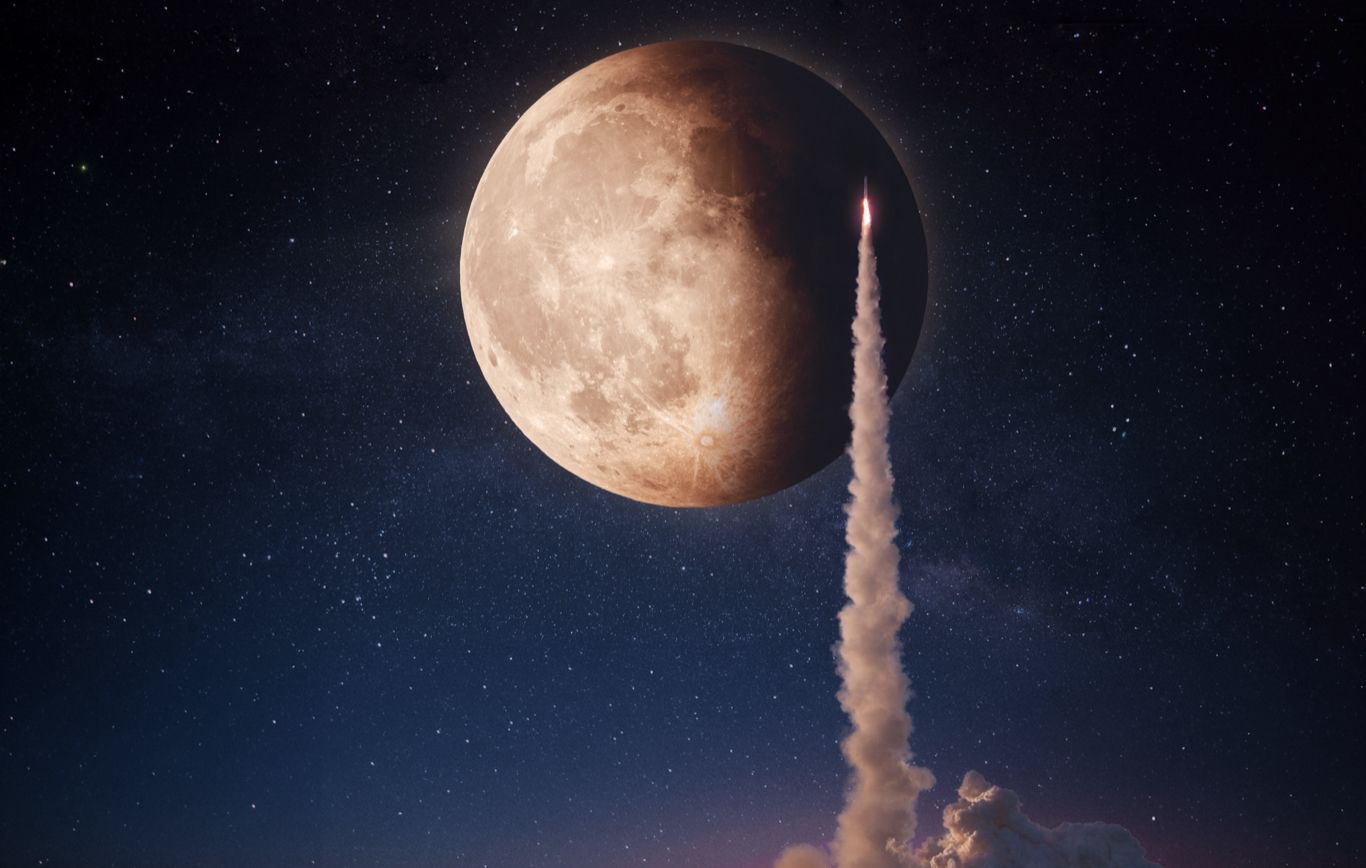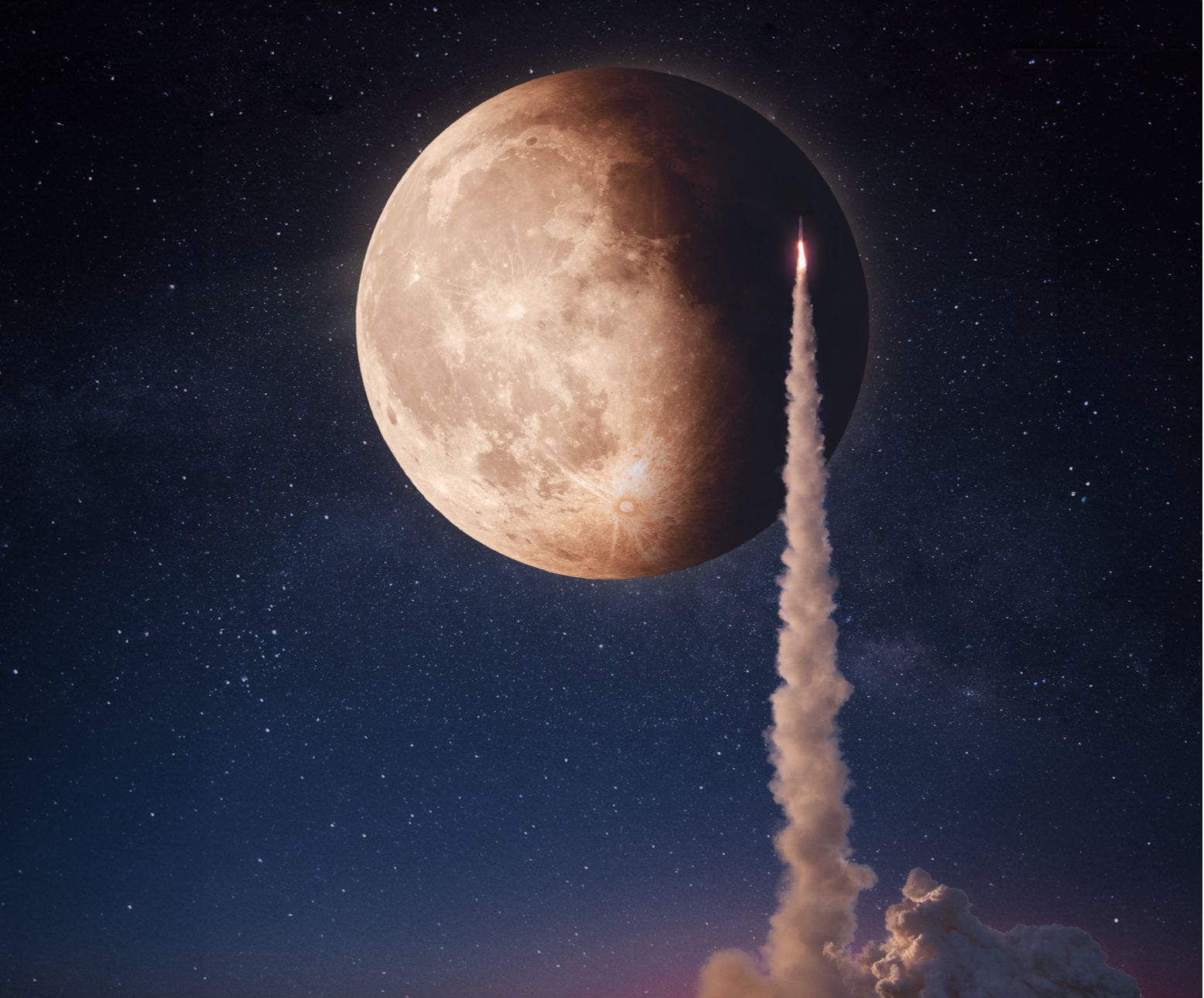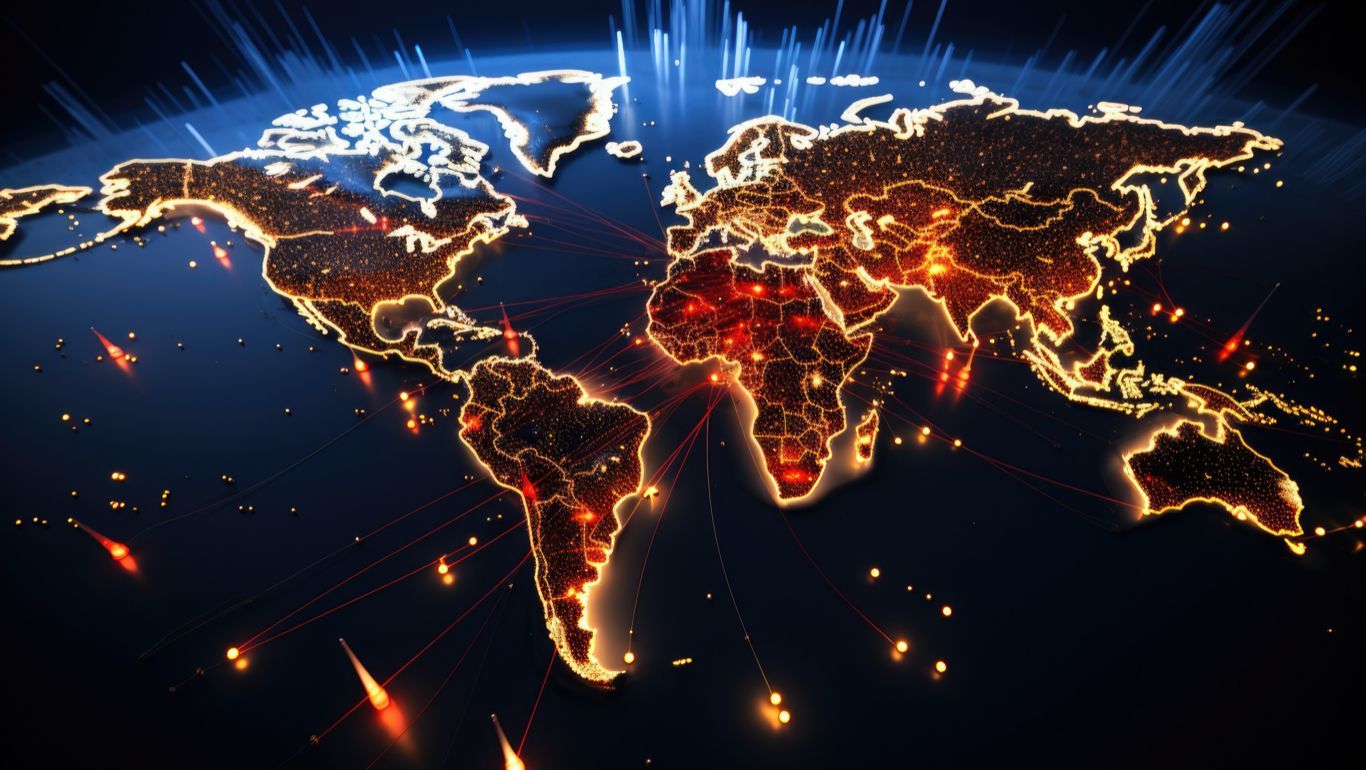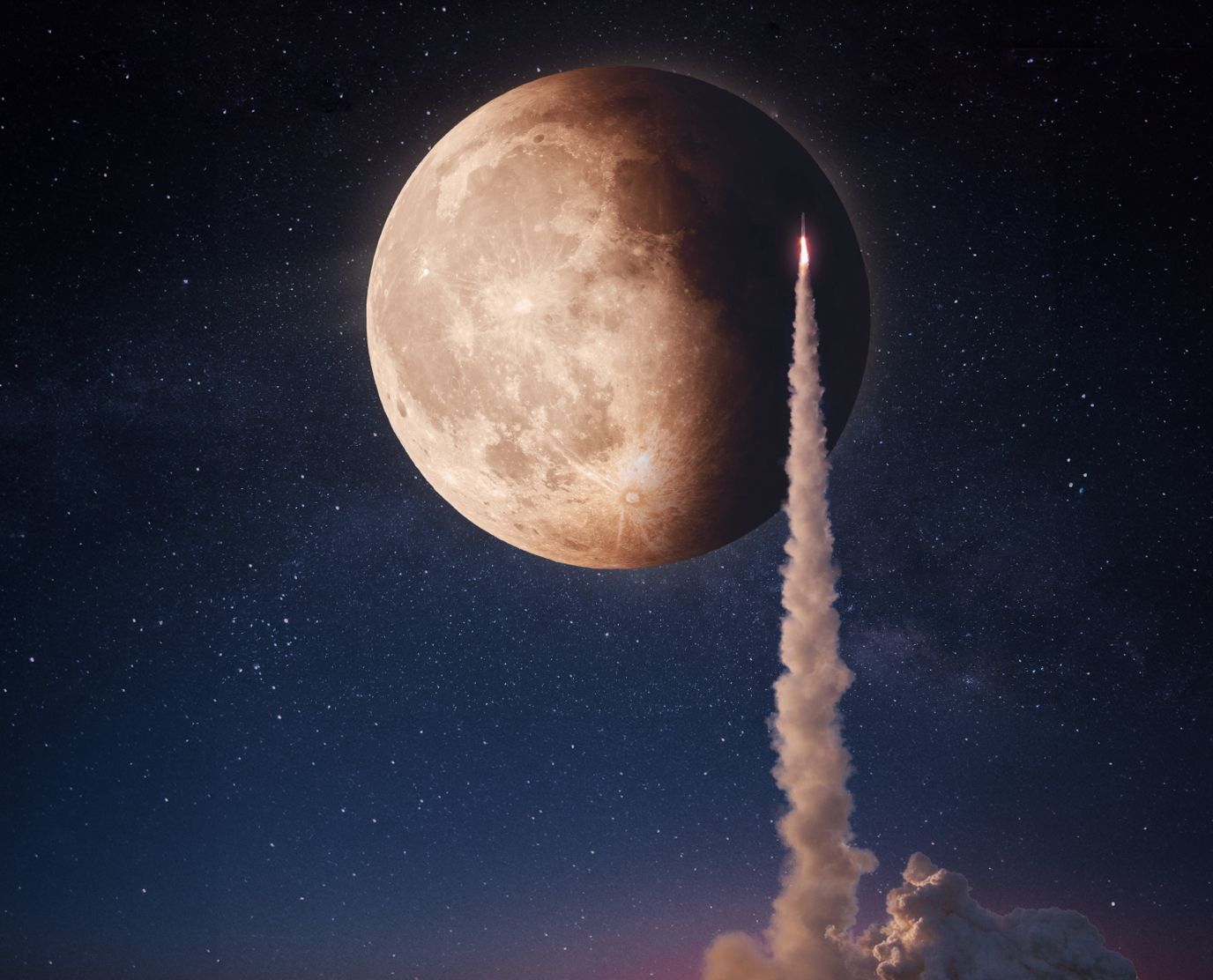Define Our Future
21 June 2024

(Image: Adobe)
This week, the UN Committee on Peaceful Uses of Outer Space (COPUOS) convened for its 67th annual meeting. The committee, established in 1959, aims to govern and maintain space activities for peace, security, and development. This year’s meeting is perhaps more urgent than ever. The New Space revolution is witnessing the rapid commercialisation of space, an increasing number of actors, heightened activity on the Moon, and the advent of space resource utilisation.
However, while the space industry is rapidly expanding worldwide, we find ourselves lacking in comprehensive frameworks to effectively govern for safe, peaceful and sustainable outcomes. It is universally agreed that the UN Outer Space Treaty provides a solid foundation for regulating activities, but its gaps are becoming increasingly evident. Who owns space resources? How will they be used for the benefit of all humanity? How do agencies and industry regulate safe operations? To what extent can lunar activities be commercialised? How can space be developed for peaceful purposes? These are just a few of the many considerations.
Prior to the COPUOS meetings, the UN Office for Outer Space Affairs hosted the first Conference on Sustainable Lunar Activities, which my colleague and I were honoured to attend. The conference aimed to provide a forum for engaging in conversations, identifying common ground, and better understanding the means by which sustainable exploration and development can unfold on the Moon.
Among the outcomes of the conference, we observed a surprising amount of unity in several areas. There is a shared aim for peaceful coordination, and agreement that the US-led regulatory framework, the Artemis Accords, and the Chinese-led International Lunar Research Station (ILRS) project, have many shared goals. There was also significant agreement on the importance of safety and transparency for interoperability and preventing harmful and dangerous interference caused by expanding operations on the Moon.
Most importantly, this first-of-its-kind conference may have proved that such events are highly effective in fostering genuine discourse. We hope this marks the beginning of many more.
Agreement on developing new frameworks, while conversations were just a beginning
I also observed broad agreement on the need for additional bodies to address regulatory gaps, with the proposal for an Action Team on Lunar Activities Consultation (ATLAC) mechanism, proposed by Romania, gaining significant traction. This calls for a consultative mechanism to address issues such as mission coordination, improving safety, regulating access to resources, and mitigating the creation of debris. The idea is currently being discussed in the ongoing COPUOS meetings.
Other proposals include using existing frameworks, such as the International Telecommunications Union (ITU) or the International Atomic Energy Agency (IAEA), as models. Furthermore, the delegation from Russia suggested establishing an international space agency under the UNOOSA, while Logan Ware of Blue Origin suggested the possibility of an international space network.
Encouragingly, there were suggestions that the Artemis Accords and the ILRS share common goals, indicating that agreements could be made between the two frameworks. Siyuan Han from the Chinese National Space Administration (CNSA) said that the Artemis Accords would offer similar principles as the ILRS, while Karen Feldstein of NASA said that they were looking forwards to discussing where there might be similarities and differences between the two. However, there were also calls for China to publish their ILRS norms and regulations, much in the way the the Artemis Accords guidelines are publicly available.
There was also universal agreement to maintain peace and stability, with the Russian delegation emphasising the need to avoid competition on the Moon and maintain it as the “common heritage of humankind”. However, while this is a vision established in the OST, it seems a "race mentality" is already taking hold, and the conference didn’t cover the geopolitical and economic rivalries which are currently impacting and diving space actors.
For example, NASA head Bill Nelson has explicitly stated that the U.S. is “in a race” with China. Additionally, a U.S. House discussion last year included voices expressing the need to beat China in the quest to secure lunar resources, possibly through the use of "safety zones," a provision embedded within the Artemis Accords designed to avoid interference.
The discussions also left much to be discussed, such as ownership and use of lunar resources, and interpretations of that within the OST. If the Moon is common heritage of humankind, then aren’t also the resources that lay within it?
Nonetheless, the conference did demonstrate that there are ways in which to stimulate dialogue, and better understand some of our shared principles.

(Image: Adobe)
China’s Cooperative Approach To Leadership And The New Geopolitics Of Space
Another significant development is China's growing leadership in space exploration in space exploration, especially regarding their ambitious plans for the Moon. During the conference, representatives from the CNSA celebrated the success of their Chang'e lunar missions. Currently, Chang'e 6 is on its way back to Earth, carrying samples from the far-side of the Moon (due to reenter earth’s atmosphere on June 25th).
They also highlighted their cooperative approach to missions, with Chang'e-6 carrying payloads from ESA, France, and Pakistan. Chang’e-7, due to launch in 2026, will also involve seven international partners. International cooperation is a key tactic in China's leadership strategy, which is reflected not only in their space programme, but also in their broader approach to international relations. In an article for Foreign Affairs, Elizabeth Economy discusses China's ambition to "remake the world" and present its "own vision for a transformed international system,” such as through their Belt and Road development Initiative (BRI), the Global Development Initiative (GDI), and the Global Security Initiative (GSI).
Elizabeth Economy continues to say that China claims to be a country offering a system that “advances the interests of the world’s people,” and in the words of President Xi, has created the world’s “largest platform for international cooperation”.
Furthermore, their foreign policy strategy is focussed on global development, often working closely with the UN, which seems similar to their approach in space. China is offering up it’s new space station, Tiangong, open for international projects in coordination with the UNOOSA. Furthermore, in March this year, within a UN draft proposal, China called for the protection of lunar resources from depletive exploitation, and called upon the UN Working Group on Legal Aspects of Space Resource Activities to find ways in order to enforce national responsibility for the actions of non-governmental entities on the Moon.
The Chinese-led transformational approach then appears to be that of promoting universal inclusivity regardless of political leanings and economic development, as apposed to a western-approach of “emphasizing human rights and democracy topics,” - as written in a government document published by the Xinhua Institute. At the lunar conference last week, the Russian delegation mirrored this by describing the ILRS as open for all, without discrimination or obligation, adding that they are internationally-driven.
————————————————————————-
Despite the outcomes of the conference, we are also still witnessing an ongoing global power-shift, which is also affecting the development of space.
Last week’s event showcased shared support for themes such safety, transparency, and peaceful development, but we must also acknowledge that space is emerging as a new frontier in geopolitical affairs.
Just this week US House Intelligence Committee Chair Rep. Mike Turner (R-Ohio) has warned of a “Cuban missile crisis in space”, and has called upon the White House to declassify information relating to the threat of Russia deploying a nuclear anti-satellite weapon into space. In May this year, the NASA chief spoke to All Things Considered, and again admitted that US was in a race with China to the Moon, and in an interview with The Washington Post added that he’s been fairly pointed in his comments that “we’re in a space race with the Chinese.”
While China may be pushing for a new cooperative leadership model, based on “partnerships despite politics", space directives could in fact becoming more ideologically and politcally-driven than ever before.
Define Our Future

(Image: Adobe)
21 June 2024
UN Lunar Conference Establishes Common Goals, China Advance Strategy Of Cooperative Leadership In Space - Special Edition

This week, the UN Committee on Peaceful Uses of Outer Space (COPUOS) convened for its 67th annual meeting. The committee, established in 1959, aims to govern and maintain space activities for peace, security, and development. This year’s meeting is perhaps more urgent than ever. The New Space revolution is witnessing the rapid commercialisation of space, an increasing number of actors, heightened activity on the Moon, and the advent of space resource utilisation.
However, while the space industry is rapidly expanding worldwide, we find ourselves lacking in comprehensive frameworks to effectively govern for safe, peaceful and sustainable outcomes. It is universally agreed that the UN Outer Space Treaty provides a solid foundation for regulating activities, but its gaps are becoming increasingly evident. Who owns space resources? How will they be used for the benefit of all humanity? How do agencies and industry regulate safe operations? To what extent can lunar activities be commercialised? How can space be developed for peaceful purposes? These are just a few of the many considerations.
Prior to the COPUOS meetings, the UN Office for Outer Space Affairs hosted the first Conference on Sustainable Lunar Activities, which my colleague and I were honoured to attend. The conference aimed to provide a forum for engaging in conversations, identifying common ground, and better understanding the means by which sustainable exploration and development can unfold on the Moon.
Among the outcomes of the conference, we observed a surprising amount of unity in several areas. There is a shared aim for peaceful coordination, and agreement that the US-led regulatory framework, the Artemis Accords, and the Chinese-led International Lunar Research Station (ILRS) project, have many shared goals. There was also significant agreement on the importance of safety and transparency for interoperability and preventing harmful and dangerous interference caused by expanding operations on the Moon.
Most importantly, this first-of-its-kind conference may have proved that such events are highly effective in fostering genuine discourse. We hope this marks the beginning of many more.
Agreement on developing new frameworks, while conversations were just a beginning
I also observed broad agreement on the need for additional bodies to address regulatory gaps, with the proposal for an Action Team on Lunar Activities Consultation (ATLAC) mechanism, proposed by Romania, gaining significant traction. This calls for a consultative mechanism to address issues such as mission coordination, improving safety, regulating access to resources, and mitigating the creation of debris. The idea is currently being discussed in the ongoing COPUOS meetings.
Other proposals include using existing frameworks, such as the International Telecommunications Union (ITU) or the International Atomic Energy Agency (IAEA), as models. Furthermore, the delegation from Russia suggested establishing an international space agency under the UNOOSA, while Logan Ware of Blue Origin suggested the possibility of an international space network.
Encouragingly, there were suggestions that the Artemis Accords and the ILRS share common goals, indicating that agreements could be made between the two frameworks. Siyuan Han from the Chinese National Space Administration (CNSA) said that the Artemis Accords would offer similar principles as the ILRS, while Karen Feldstein of NASA said that they were looking forwards to discussing where there might be similarities and differences between the two. However, there were also calls for China to publish their ILRS norms and regulations, much in the way the the Artemis Accords guidelines are publicly available.
There was also universal agreement to maintain peace and stability, with the Russian delegation emphasising the need to avoid competition on the Moon and maintain it as the “common heritage of humankind”. However, while this is a vision established in the OST, it seems a "race mentality" is already taking hold, and the conference didn’t cover the geopolitical and economic rivalries which are currently impacting and diving space actors.
For example, NASA head Bill Nelson has explicitly stated that the U.S. is “in a race” with China. Additionally, a U.S. House discussion last year included voices expressing the need to beat China in the quest to secure lunar resources, possibly through the use of "safety zones," a provision embedded within the Artemis Accords designed to avoid interference.
The discussions also left much to be discussed, such as ownership and use of lunar resources, and interpretations of that within the OST. If the Moon is common heritage of humankind, then aren’t also the resources that lay within it?
Nonetheless, the conference did demonstrate that there are ways in which to stimulate dialogue, and better understand some of our shared principles.

(Image: Adobe)
China’s Cooperative Approach To Leadership And The New Geopolitics Of Space
Another significant development is China's growing leadership in space exploration, especially regarding their ambitious plans for the Moon. During the conference, representatives from the CNSA celebrated the success of their Chang'e lunar missions. Currently, Chang'e 6 is on its way back to Earth, carrying samples from the far-side of the Moon (due to reenter earth’s atmosphere on June 25th).
They also highlighted their cooperative approach to missions, with Chang'e-6 carrying payloads from ESA, France, and Pakistan. Chang’e-7, due to launch in 2026, will also involve seven international partners. International cooperation is a key tactic in China's leadership strategy, which is reflected not only in their space programme, but also in their broader approach to international relations. In an article for Foreign Affairs, Elizabeth Economy discusses China's ambition to "remake the world" and present its "own vision for a transformed international system,” such as through their Belt and Road development Initiative (BRI), the Global Development Initiative (GDI), and the Global Security Initiative (GSI).
Elizabeth Economy continues to say that China claims to be a country offering a system that “advances the interests of the world’s people,” and in the words of President Xi, has created the world’s “largest platform for international cooperation”.
Furthermore, their foreign policy strategy is focussed on global development, often working closely with the UN, which seems similar to their approach in space. China is offering up it’s new space station, Tiangong, open for international projects in coordination with the UNOOSA. Furthermore, in March this year, within a UN draft proposal, China called for the protection of lunar resources from depletive exploitation, and called upon the UN Working Group on Legal Aspects of Space Resource Activities to find ways in order to enforce national responsibility for the actions of non-governmental entities on the Moon.
The Chinese-led transformational approach then appears to be that of promoting universal inclusivity regardless of political leanings and economic development, as apposed to a western-approach of “emphasizing human rights and democracy topics,” - as written in a government document published by the Xinhua Institute. At the lunar conference last week, the Russian delegation mirrored this by describing the ILRS as open for all, without discrimination or obligation, adding that they are internationally-driven.
————————————————————————-
Despite the outcomes of the conference, we are also still witnessing an ongoing global power-shift, which is also affecting the development of space.
Last week’s event showcased shared support for themes such safety, transparency, and peaceful development, but we must also acknowledge that space is emerging as a new frontier in geopolitical affairs.
Just this week US House Intelligence Committee Chair Rep. Mike Turner (R-Ohio) has warned of a “Cuban missile crisis in space”, and has called upon the White House to declassify information relating to the threat of Russia deploying a nuclear anti-satellite weapon into space. In May this year, the NASA chief spoke to All Things Considered, and again admitted that US was in a race with China to the Moon, and in an interview with The Washington Post added that he’s been fairly pointed in his comments that “we’re in a space race with the Chinese.”
While China may be pushing for a new cooperative leadership model, based on “partnerships despite politics", space directives could in fact becoming more ideologically and politcally-driven than ever before.
Share this article
21 June 2024
UN Lunar Conference Establishes Common Goals, China Advance Strategy Of Cooperative Leadership In Space - Space News Roundup


(Image: Adobe)
This week, the UN Committee on Peaceful Uses of Outer Space (COPUOS) convened for its 67th annual meeting. The committee, established in 1959, aims to govern and maintain space activities for peace, security, and development. This year’s meeting is perhaps more urgent than ever. The New Space revolution is witnessing the rapid commercialisation of space, an increasing number of actors, heightened activity on the Moon, and the advent of space resource utilisation.
However, while the space industry is rapidly expanding worldwide, we find ourselves lacking in comprehensive frameworks to effectively govern for safe, peaceful and sustainable outcomes. It is universally agreed that the UN Outer Space Treaty provides a solid foundation for regulating activities, but its gaps are becoming increasingly evident. Who owns space resources? How will they be used for the benefit of all humanity? How do agencies and industry regulate safe operations? To what extent can lunar activities be commercialised? How can space be developed for peaceful purposes? These are just a few of the many considerations.
Prior to the COPUOS meetings, the UN Office for Outer Space Affairs hosted the first Conference on Sustainable Lunar Activities, which my colleague and I were honoured to attend. The conference aimed to provide a forum for engaging in conversations, identifying common ground, and better understanding the means by which sustainable exploration and development can unfold on the Moon.
Among the outcomes of the conference, we observed a surprising amount of unity in several areas. There is a shared aim for peaceful coordination, and agreement that the US-led regulatory framework, the Artemis Accords, and the Chinese-led International Lunar Research Station (ILRS) project, have many shared goals. There was also significant agreement on the importance of safety and transparency for interoperability and preventing harmful and dangerous interference caused by expanding operations on the Moon.
Most importantly, this first-of-its-kind conference may have proved that such events are highly effective in fostering genuine discourse. We hope this marks the beginning of many more.
Agreement on developing new frameworks, while conversations were just a beginning
I also observed broad agreement on the need for additional bodies to address regulatory gaps, with the proposal for an Action Team on Lunar Activities Consultation (ATLAC) mechanism, proposed by Romania, gaining significant traction. This calls for a consultative mechanism to address issues such as mission coordination, improving safety, regulating access to resources, and mitigating the creation of debris. The idea is currently being discussed in the ongoing COPUOS meetings.
Other proposals include using existing frameworks, such as the International Telecommunications Union (ITU) or the International Atomic Energy Agency (IAEA), as models. Furthermore, the delegation from Russia suggested establishing an international space agency under the UNOOSA, while Logan Ware of Blue Origin suggested the possibility of an international space network.
Encouragingly, there were suggestions that the Artemis Accords and the ILRS share common goals, indicating that agreements could be made between the two frameworks. Siyuan Han from the Chinese National Space Administration (CNSA) said that the Artemis Accords would offer similar principles as the ILRS, while Karen Feldstein of NASA said that they were looking forwards to discussing where there might be similarities and differences between the two. However, there were also calls for China to publish their ILRS norms and regulations, much in the way the the Artemis Accords guidelines are publicly available.
There was also universal agreement to maintain peace and stability, with the Russian delegation emphasising the need to avoid competition on the Moon and maintain it as the “common heritage of humankind”. However, while this is a vision established in the OST, it seems a "race mentality" is already taking hold, and the conference didn’t cover the geopolitical and economic rivalries which are currently impacting and diving space actors.
For example, NASA head Bill Nelson has explicitly stated that the U.S. is “in a race” with China. Additionally, a U.S. House discussion last year included voices expressing the need to beat China in the quest to secure lunar resources, possibly through the use of "safety zones," a provision embedded within the Artemis Accords designed to avoid interference.
The discussions also left much to be discussed, such as ownership and use of lunar resources, and interpretations of that within the OST. If the Moon is common heritage of humankind, then aren’t also the resources that lay within it?
Nonetheless, the conference did demonstrate that there are ways in which to stimulate dialogue, and better understand some of our shared principles.

(Image: Adobe)
China’s Cooperative Approach To Leadership And The New Geopolitics Of Space
Another significant development is China's growing leadership in space exploration in space exploration, especially regarding their ambitious plans for the Moon. During the conference, representatives from the CNSA celebrated the success of their Chang'e lunar missions. Currently, Chang'e 6 is on its way back to Earth, carrying samples from the far-side of the Moon (due to reenter earth’s atmosphere on June 25th).
They also highlighted their cooperative approach to missions, with Chang'e-6 carrying payloads from ESA, France, and Pakistan. Chang’e-7, due to launch in 2026, will also involve seven international partners. International cooperation is a key tactic in China's leadership strategy, which is reflected not only in their space programme, but also in their broader approach to international relations. In an article for Foreign Affairs, Elizabeth Economy discusses China's ambition to "remake the world" and present its "own vision for a transformed international system,” such as through their Belt and Road development Initiative (BRI), the Global Development Initiative (GDI), and the Global Security Initiative (GSI).
Elizabeth Economy continues to say that China claims to be a country offering a system that “advances the interests of the world’s people,” and in the words of President Xi, has created the world’s “largest platform for international cooperation”.
Furthermore, their foreign policy strategy is focussed on global development, often working closely with the UN, which seems similar to their approach in space. China is offering up it’s new space station, Tiangong, open for international projects in coordination with the UNOOSA. Furthermore, in March this year, within a UN draft proposal, China called for the protection of lunar resources from depletive exploitation, and called upon the UN Working Group on Legal Aspects of Space Resource Activities to find ways in order to enforce national responsibility for the actions of non-governmental entities on the Moon.
The Chinese-led transformational approach then appears to be that of promoting universal inclusivity regardless of political leanings and economic development, as apposed to a western-approach of “emphasizing human rights and democracy topics,” - as written in a government document published by the Xinhua Institute. At the lunar conference last week, the Russian delegation mirrored this by describing the ILRS as open for all, without discrimination or obligation, adding that they are internationally-driven.
————————————————————————-
Despite the outcomes of the conference, we are also still witnessing an ongoing global power-shift, which is also affecting the development of space.
Last week’s event showcased shared support for themes such safety, transparency, and peaceful development, but we must also acknowledge that space is emerging as a new frontier in geopolitical affairs.
Just this week US House Intelligence Committee Chair Rep. Mike Turner (R-Ohio) has warned of a “Cuban missile crisis in space”, and has called upon the White House to declassify information relating to the threat of Russia deploying a nuclear anti-satellite weapon into space. In May this year, the NASA chief spoke to All Things Considered, and again admitted that US was in a race with China to the Moon, and in an interview with The Washington Post added that he’s been fairly pointed in his comments that “we’re in a space race with the Chinese.”
While China may be pushing for a new cooperative leadership model, based on “partnerships despite politics", space directives could in fact becoming more ideologically and politcally-driven than ever before.
Share this article

